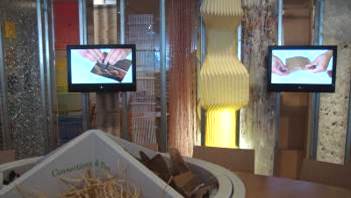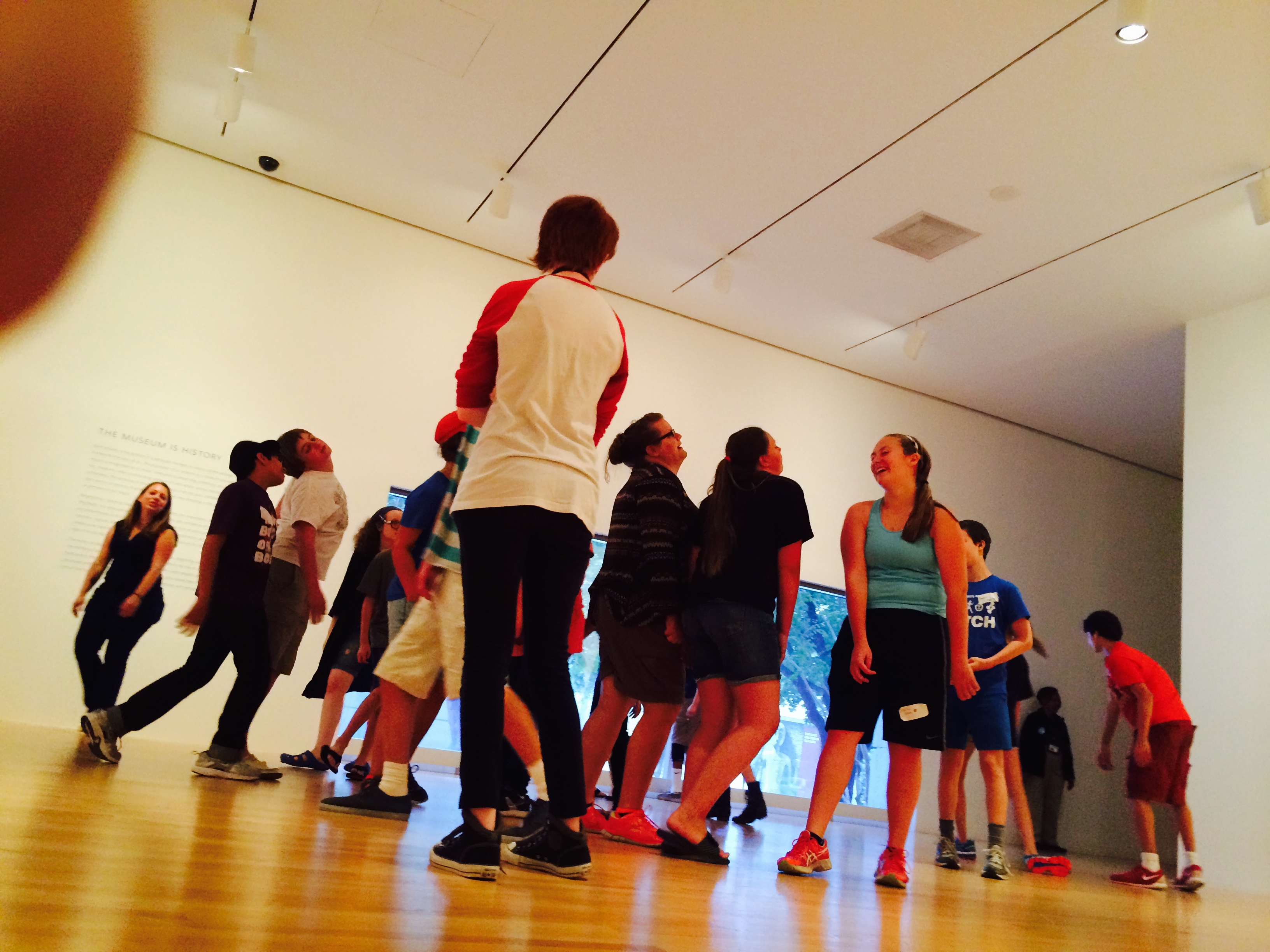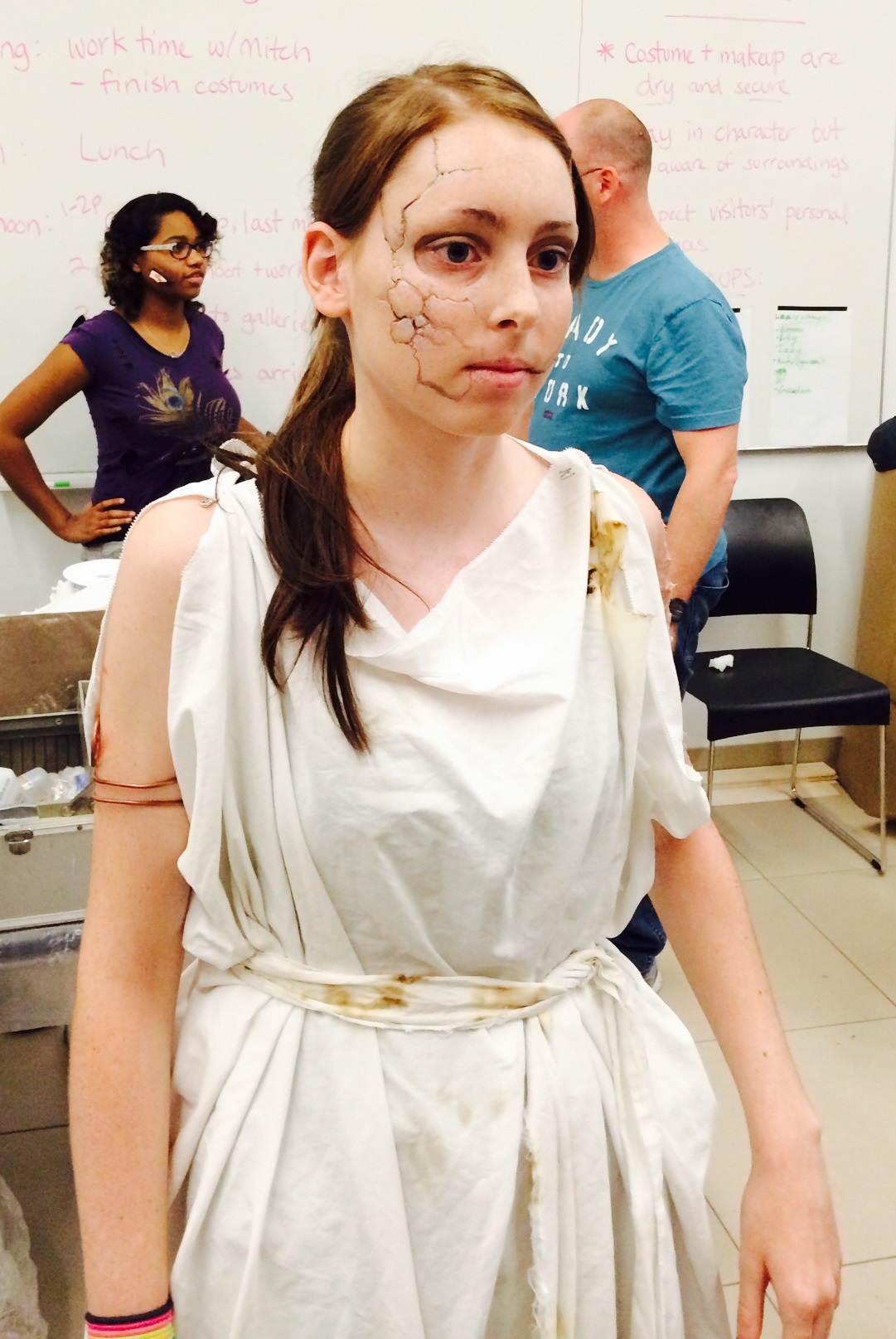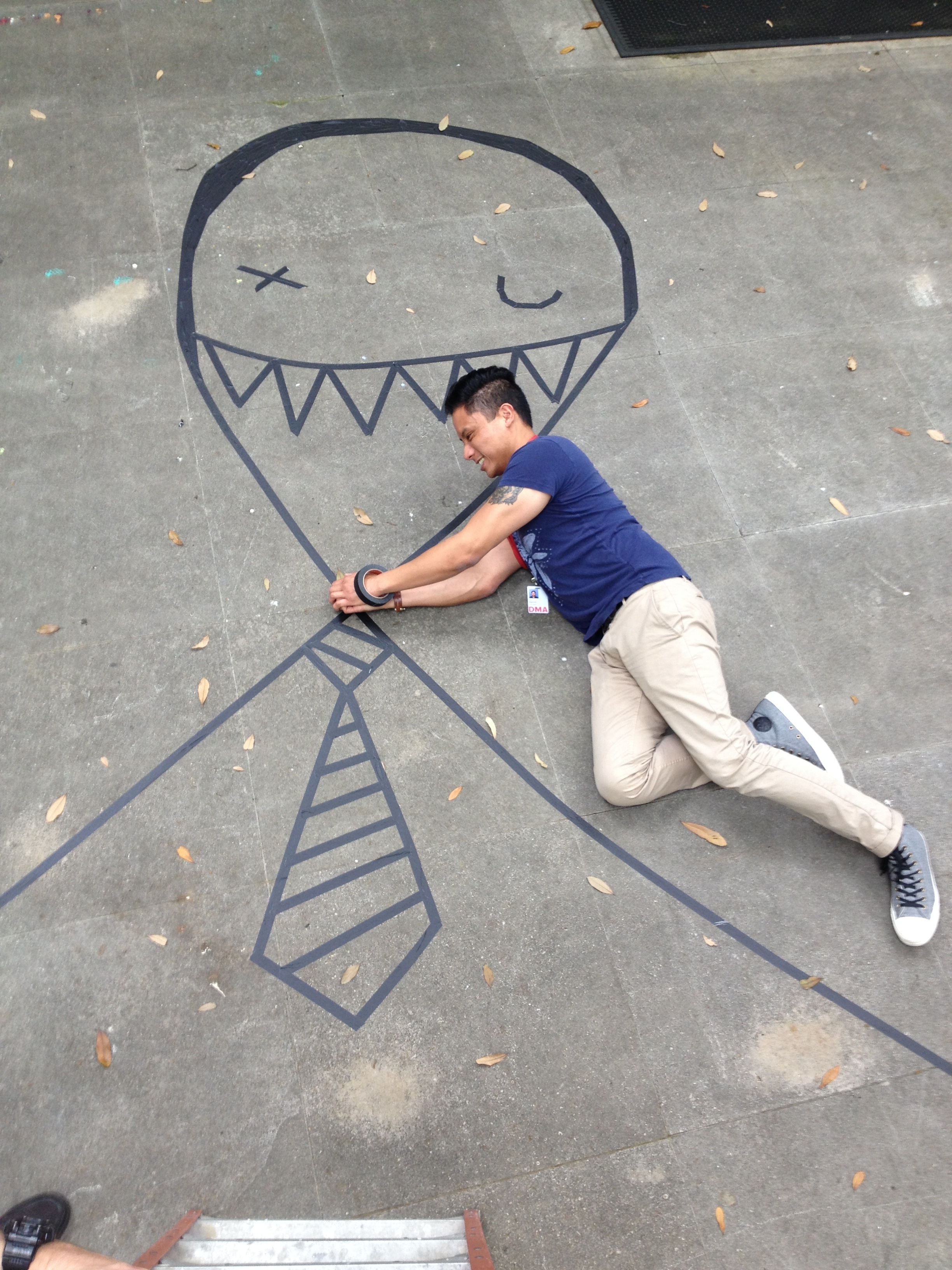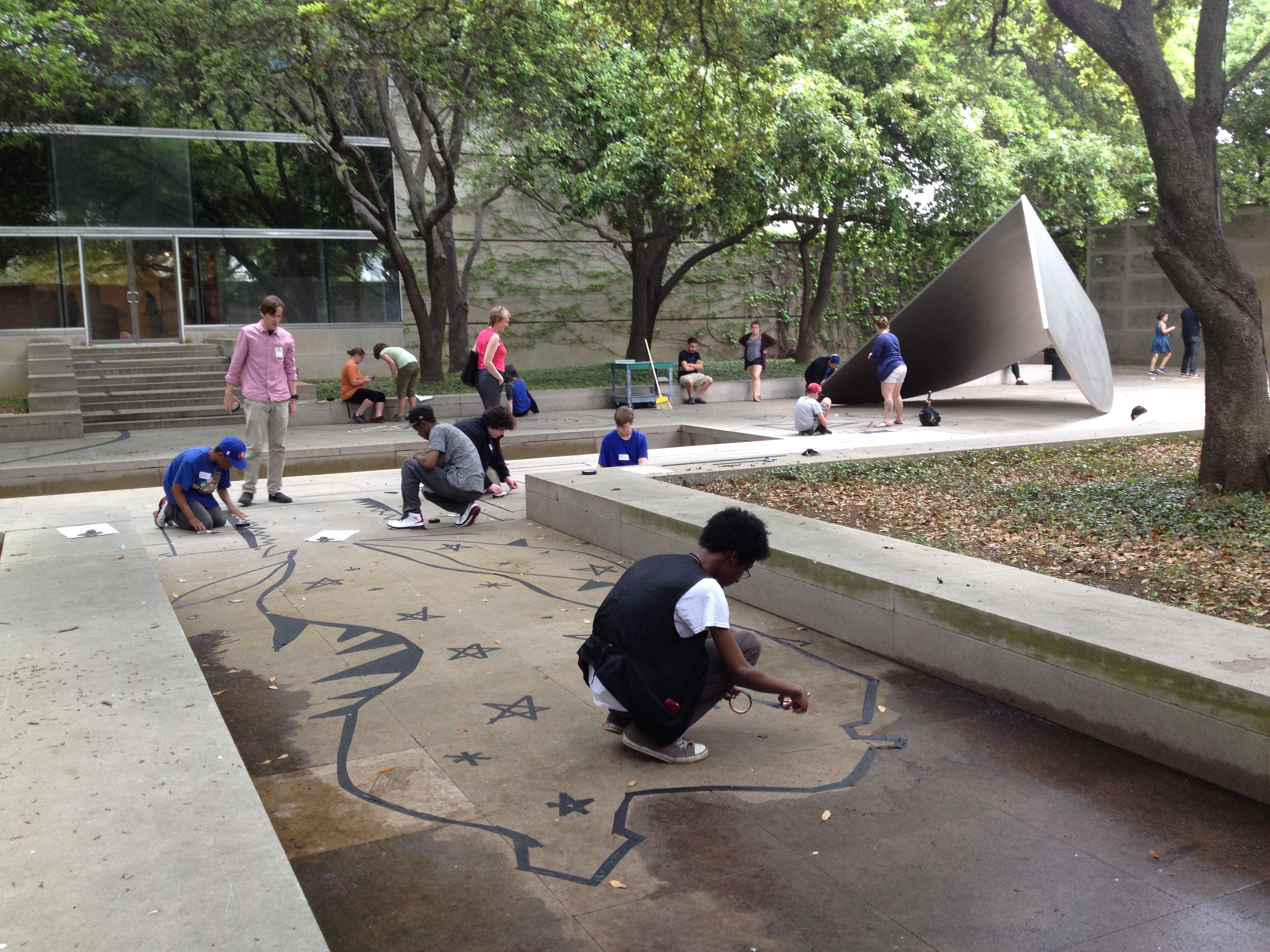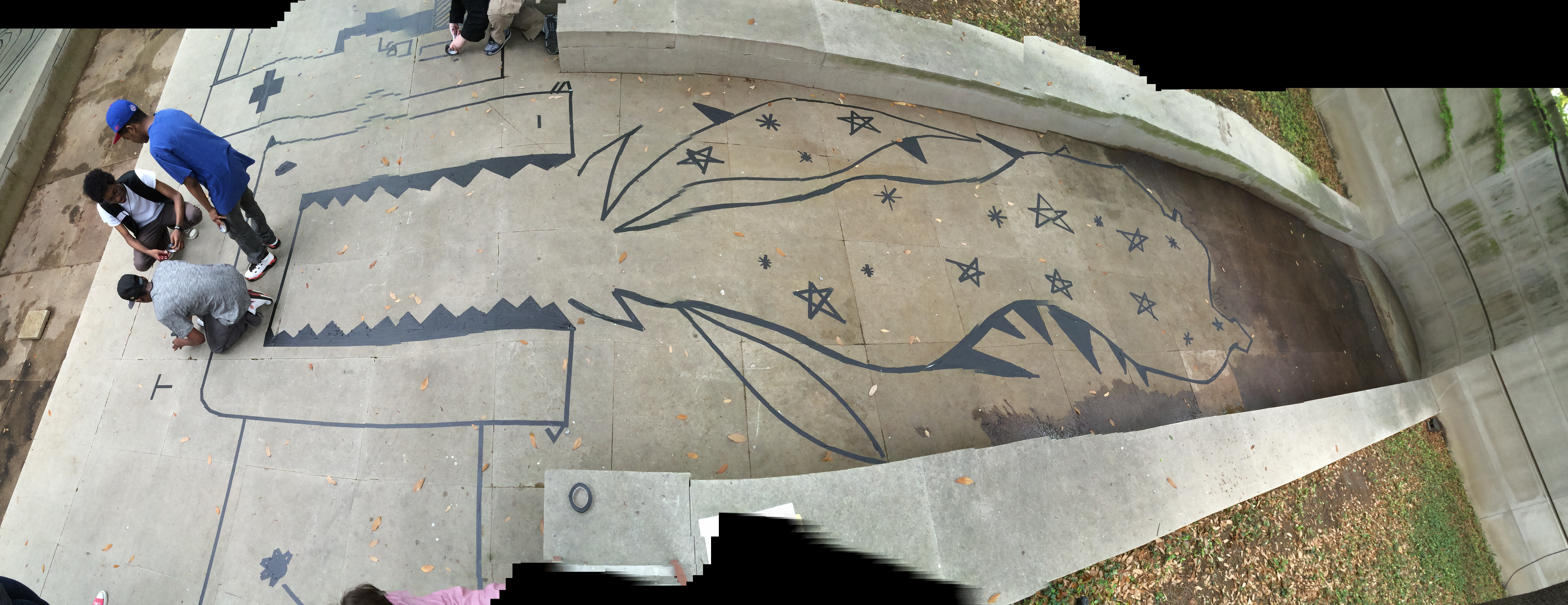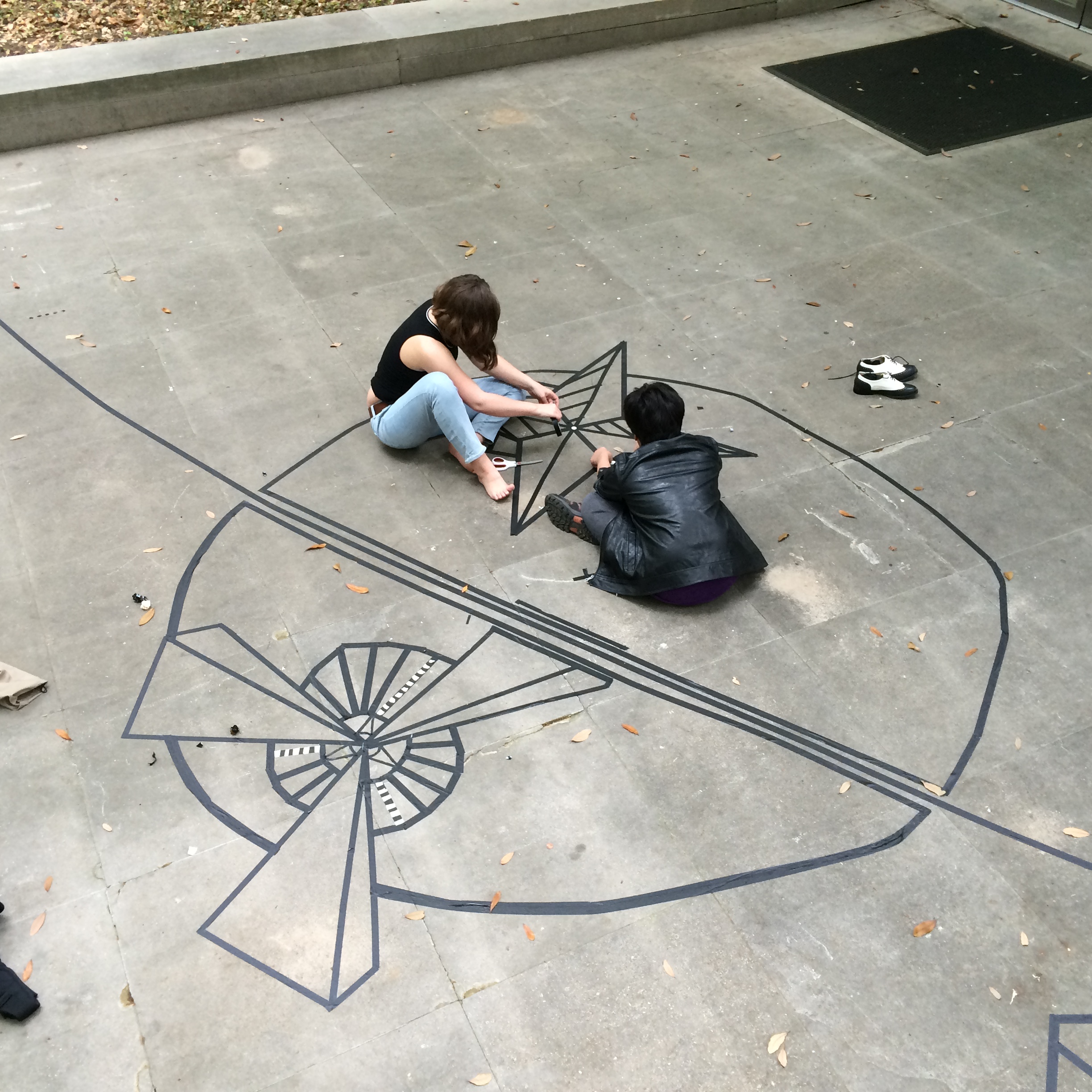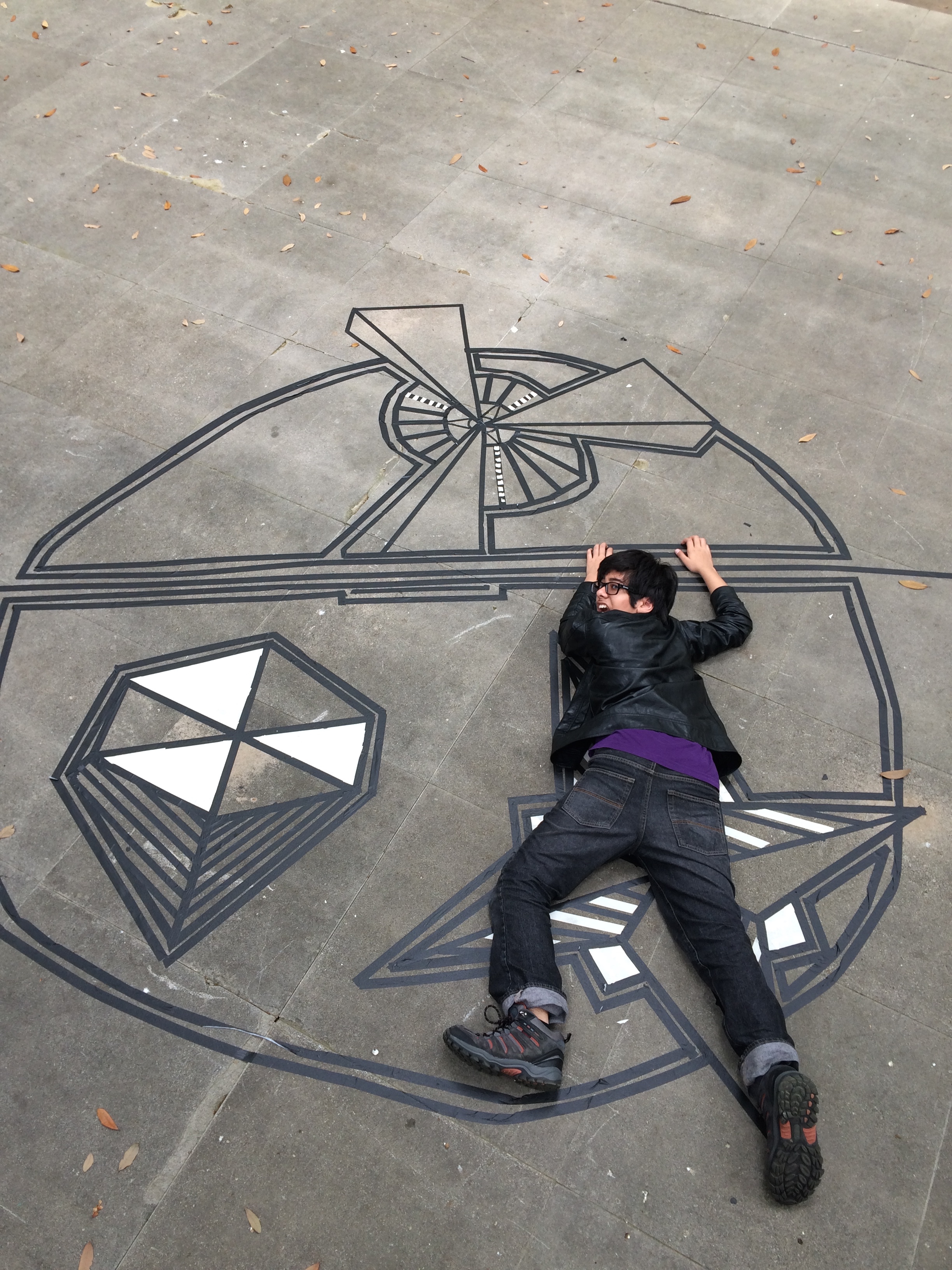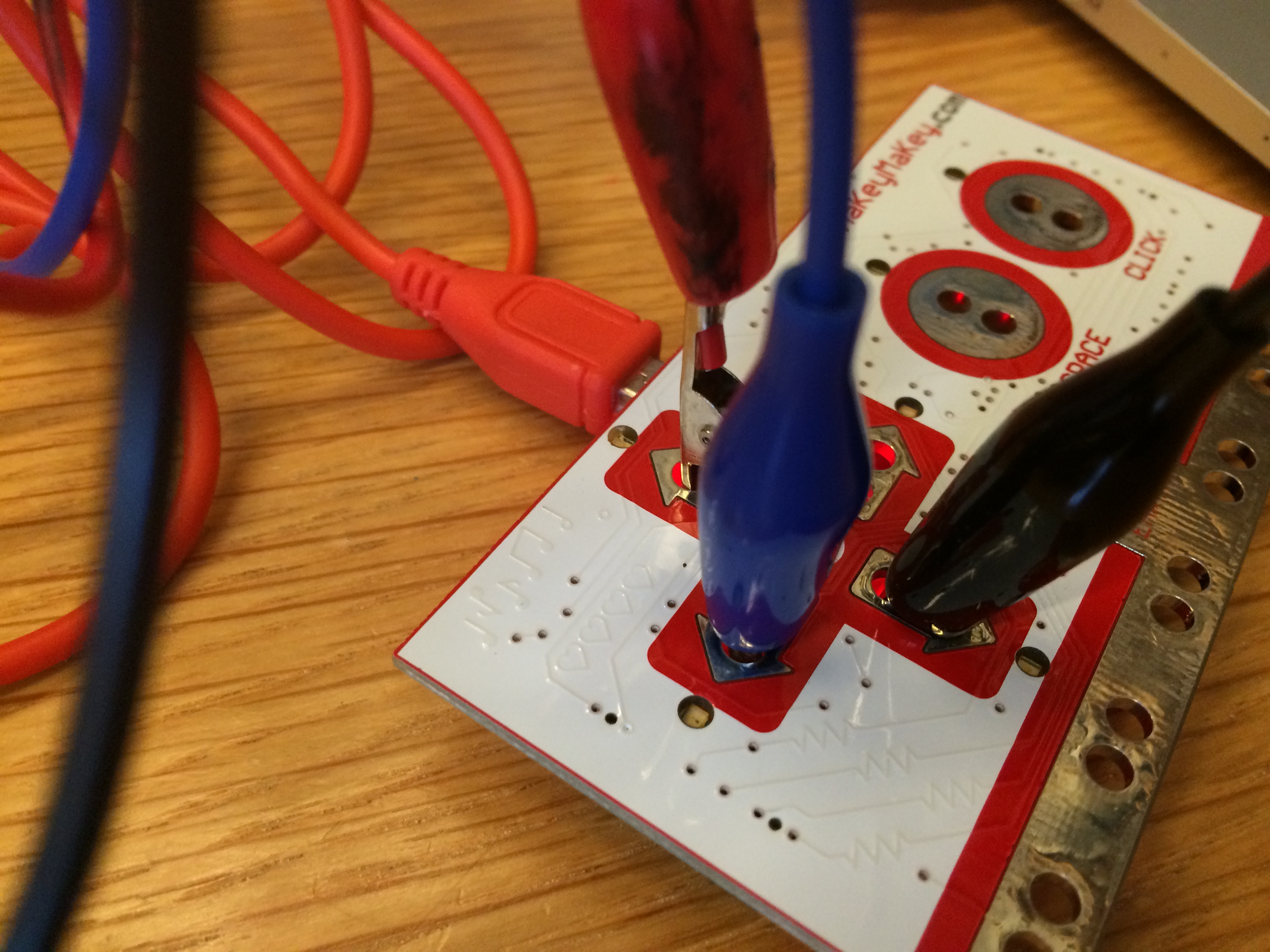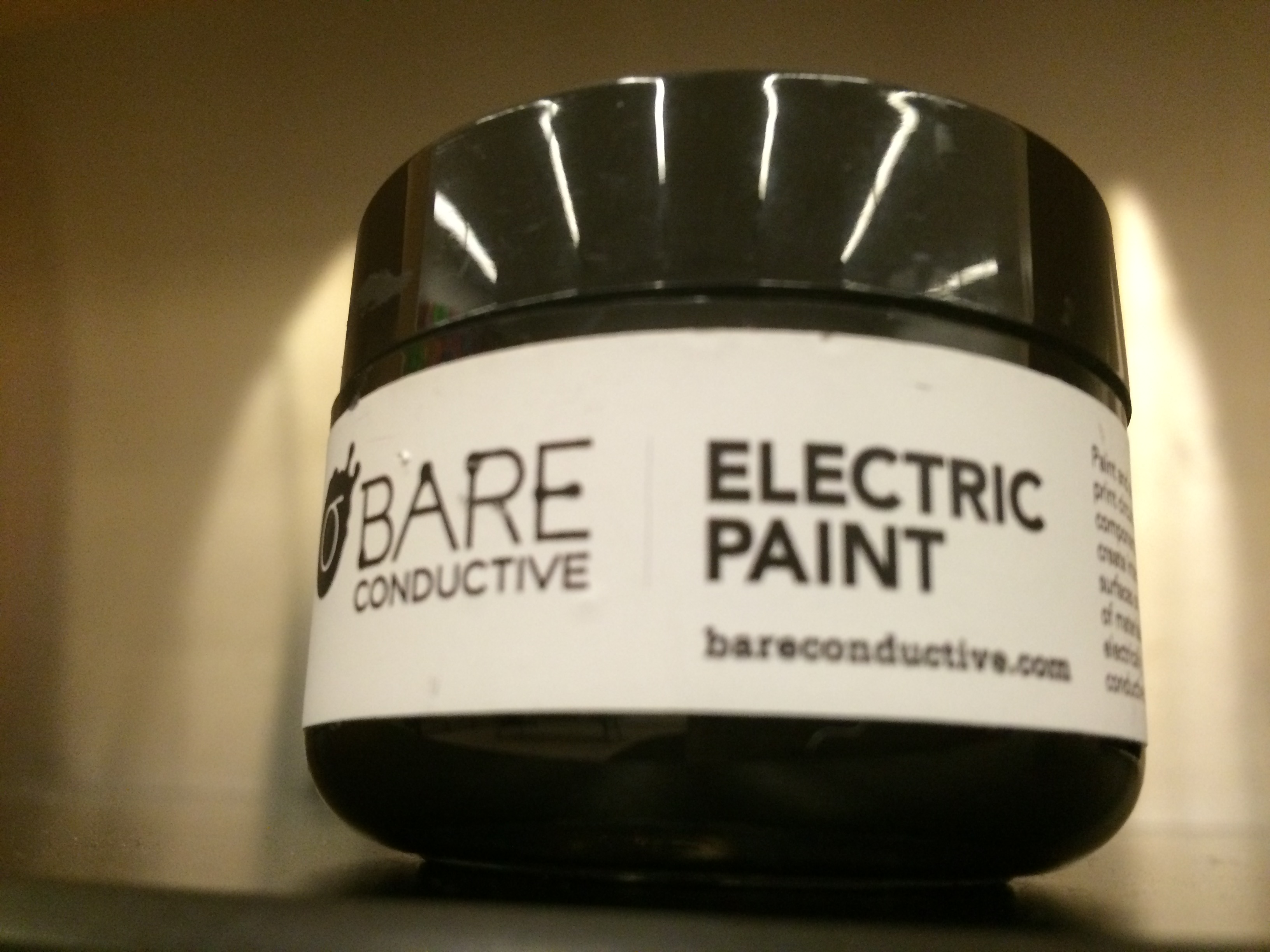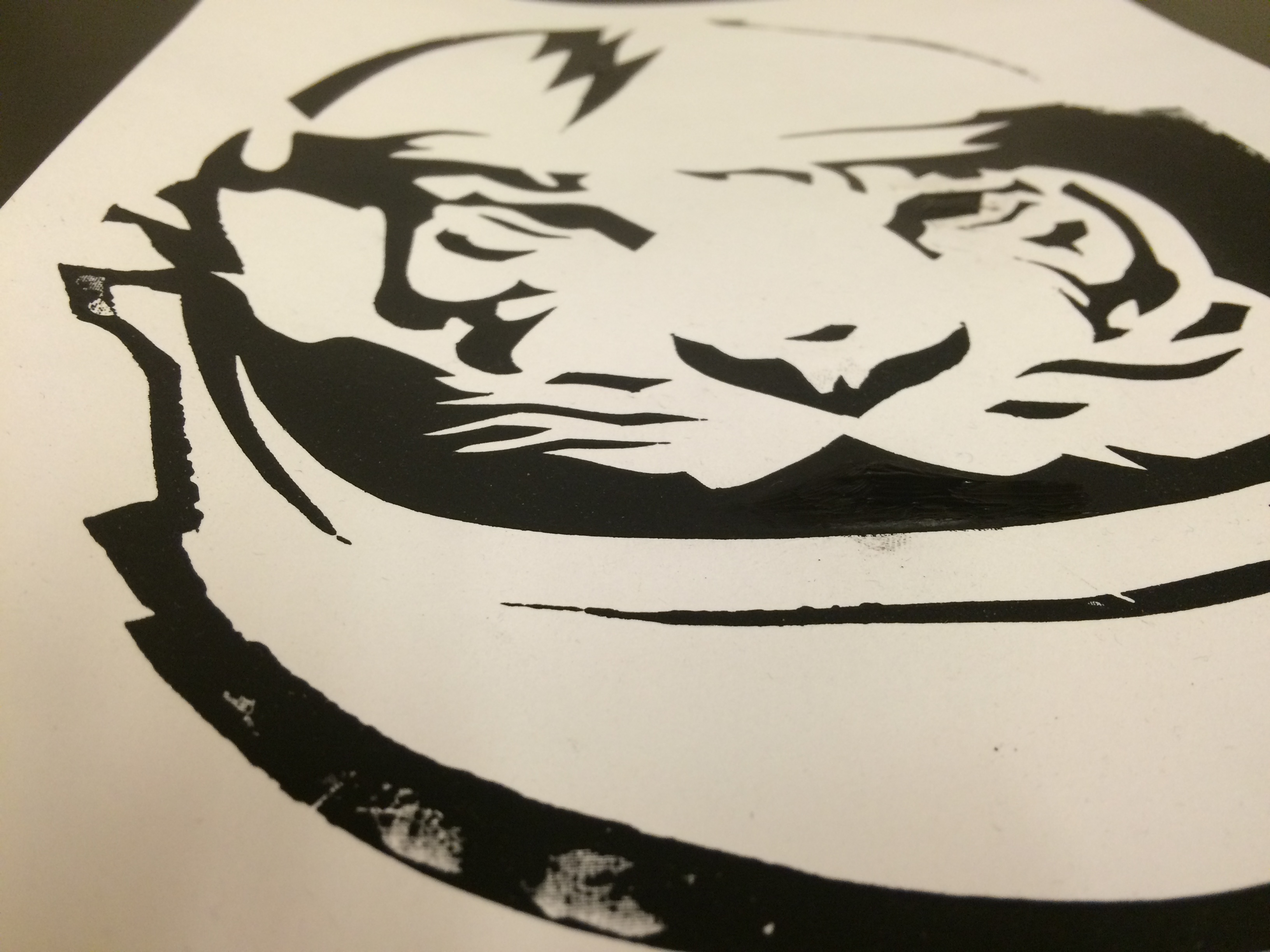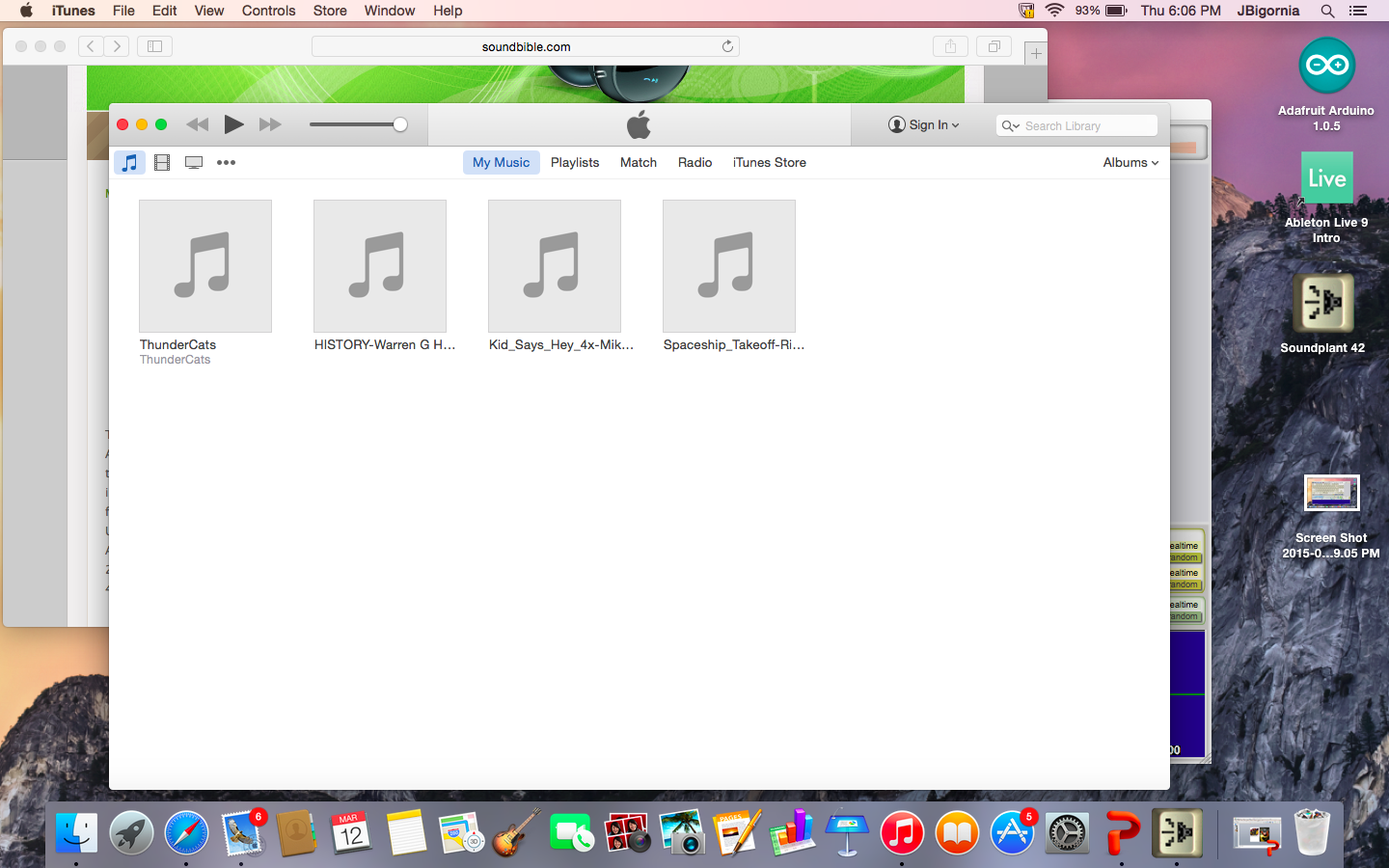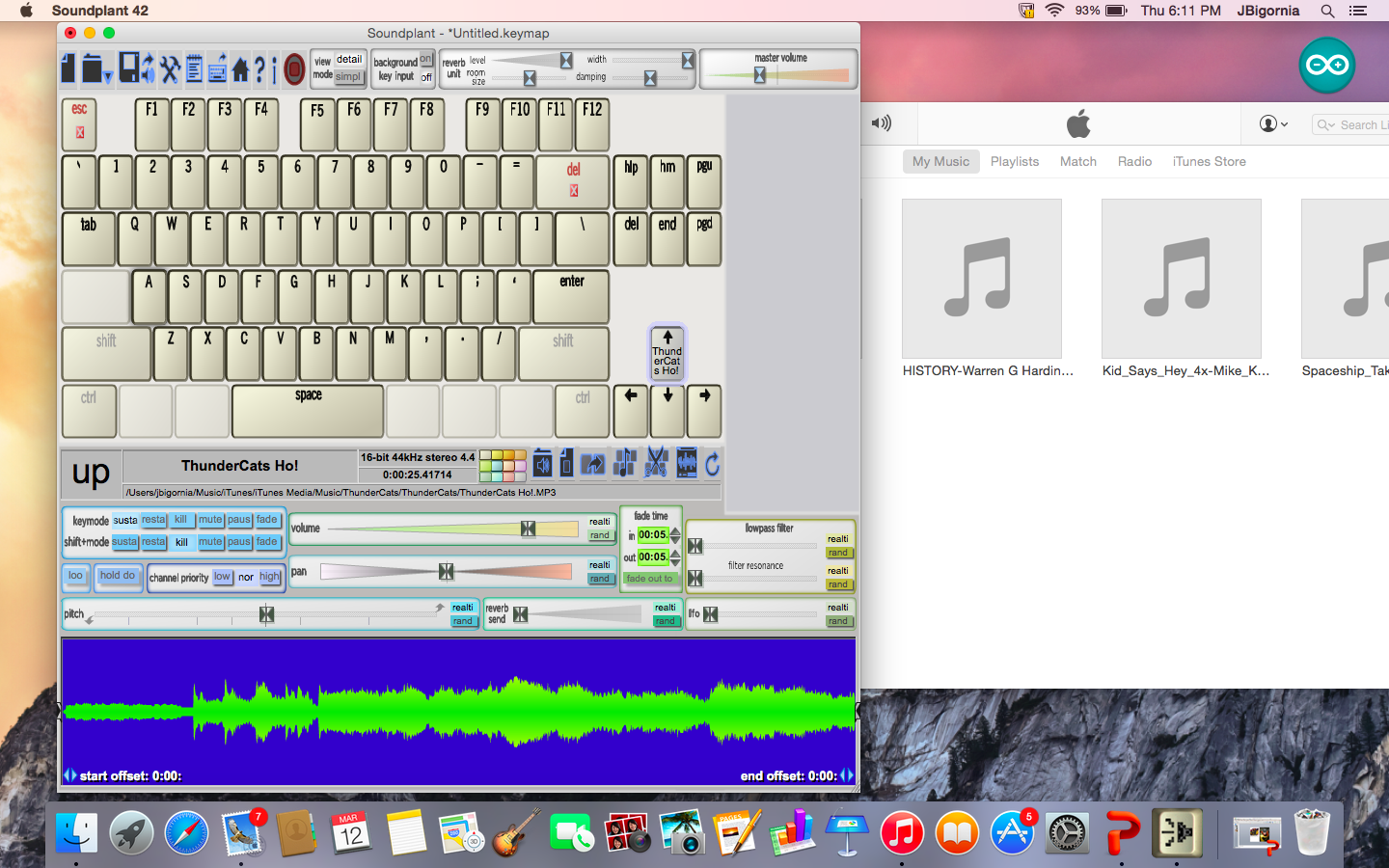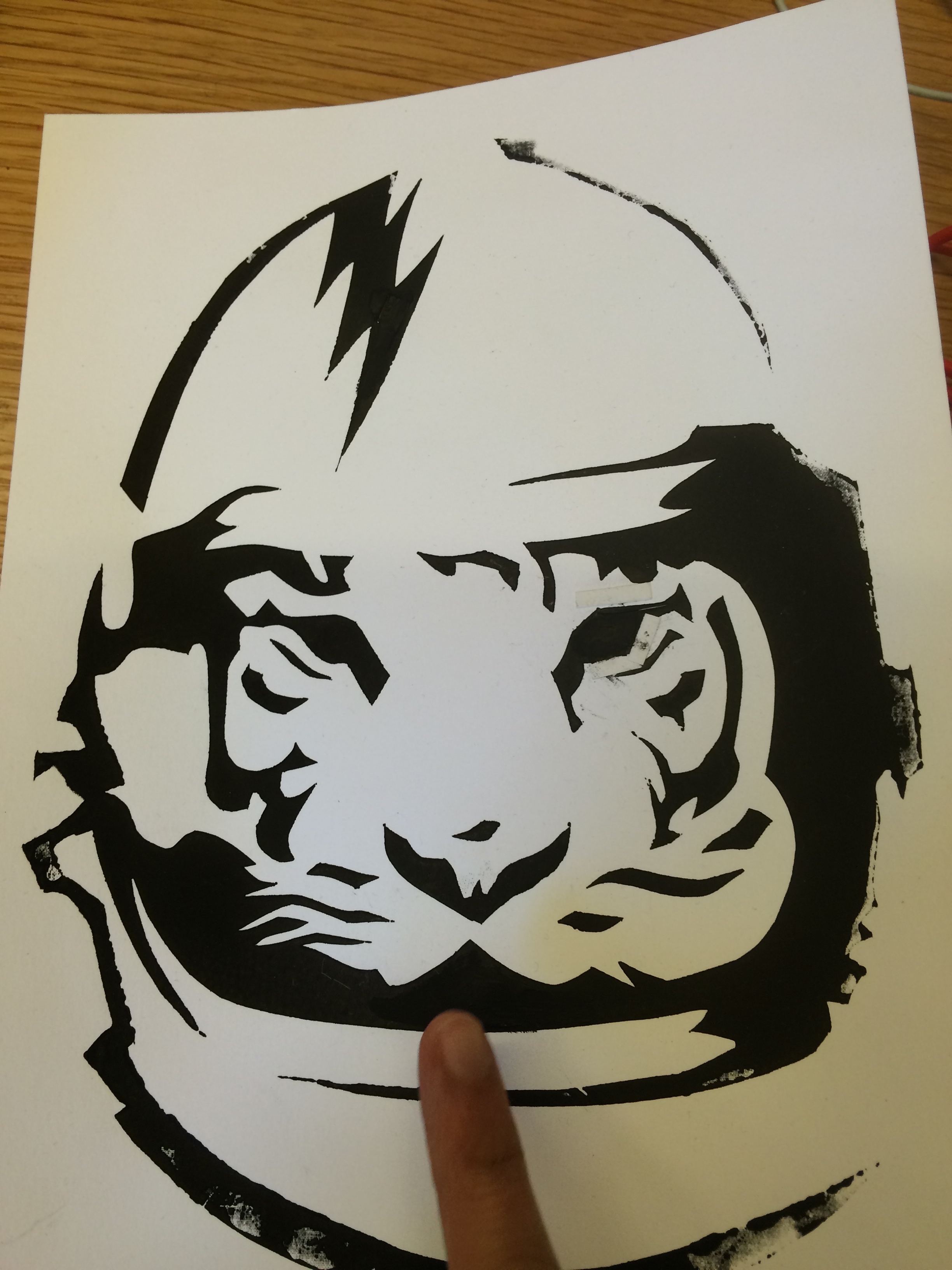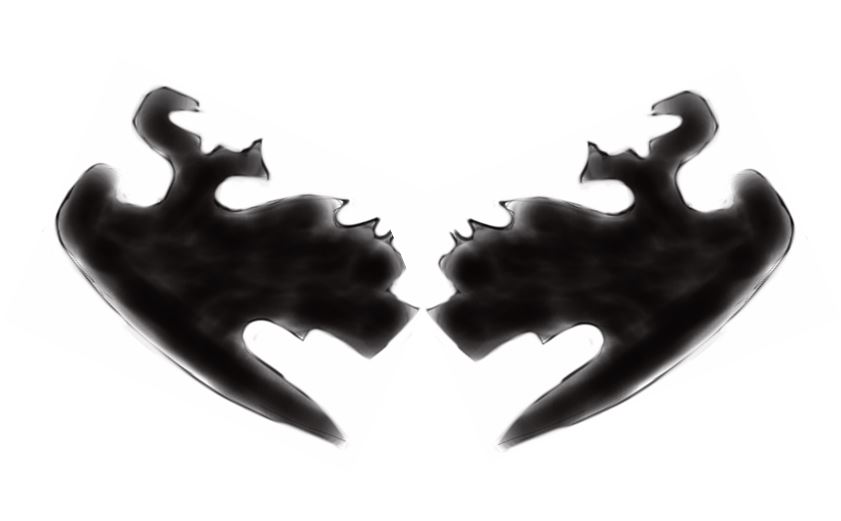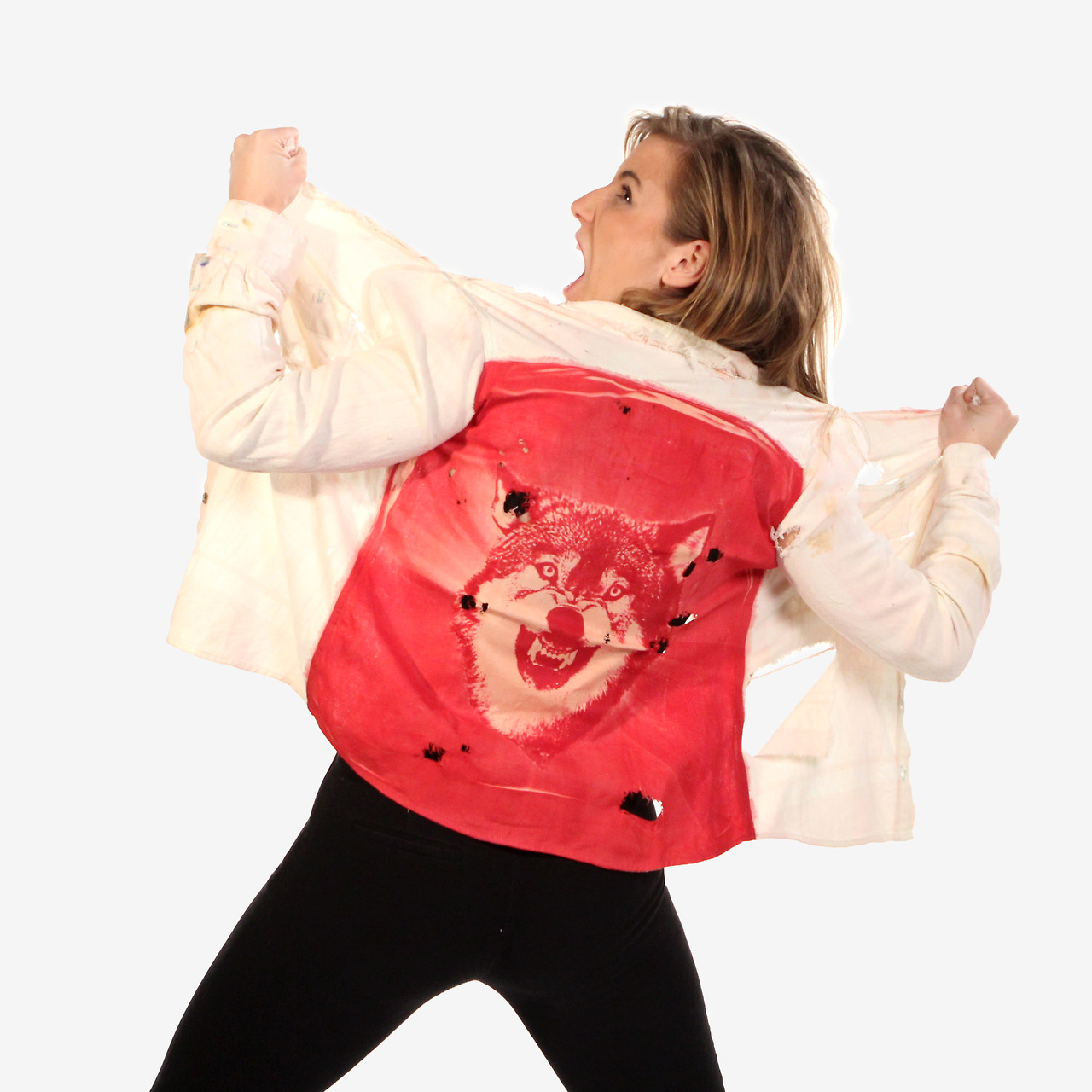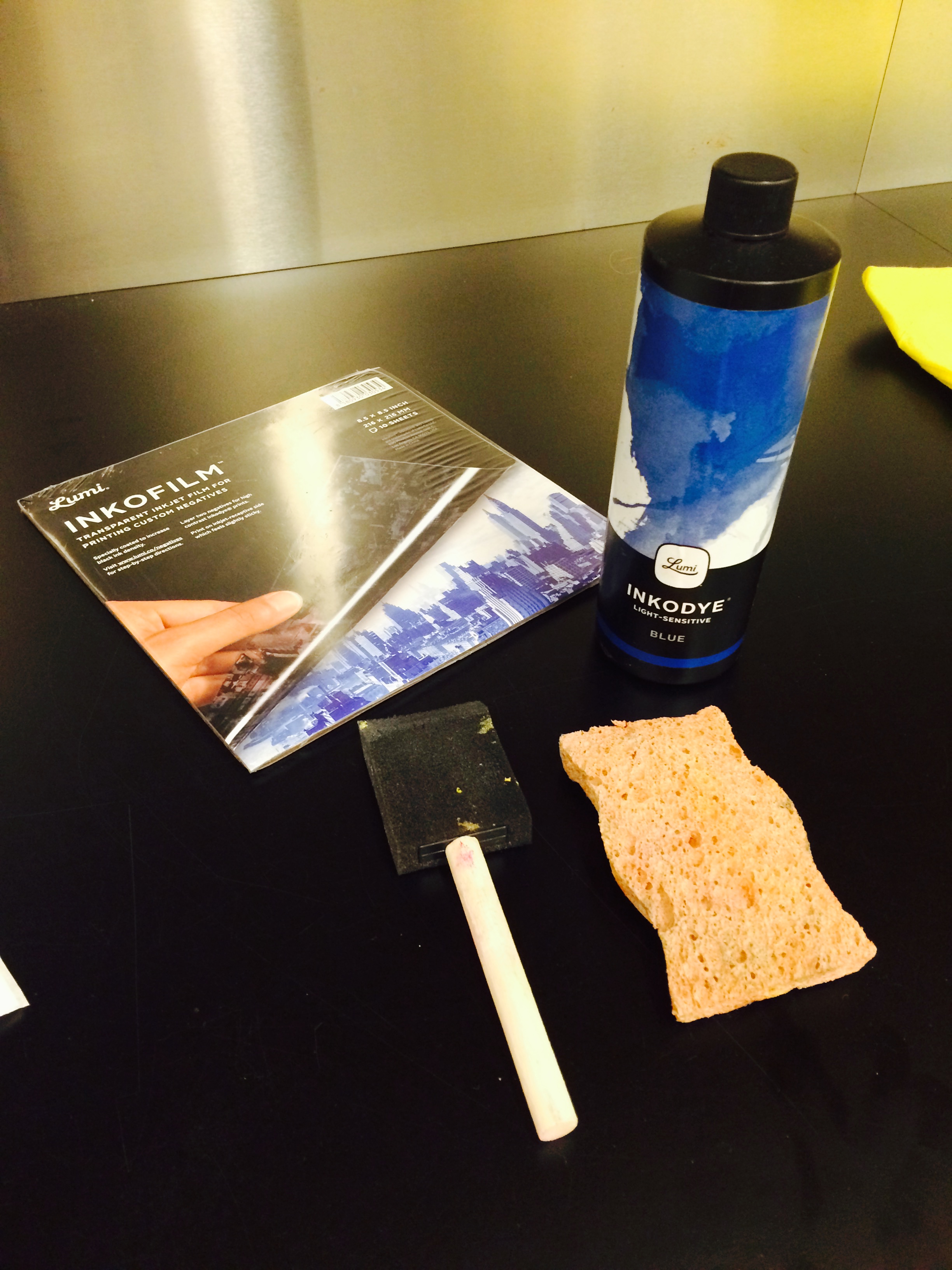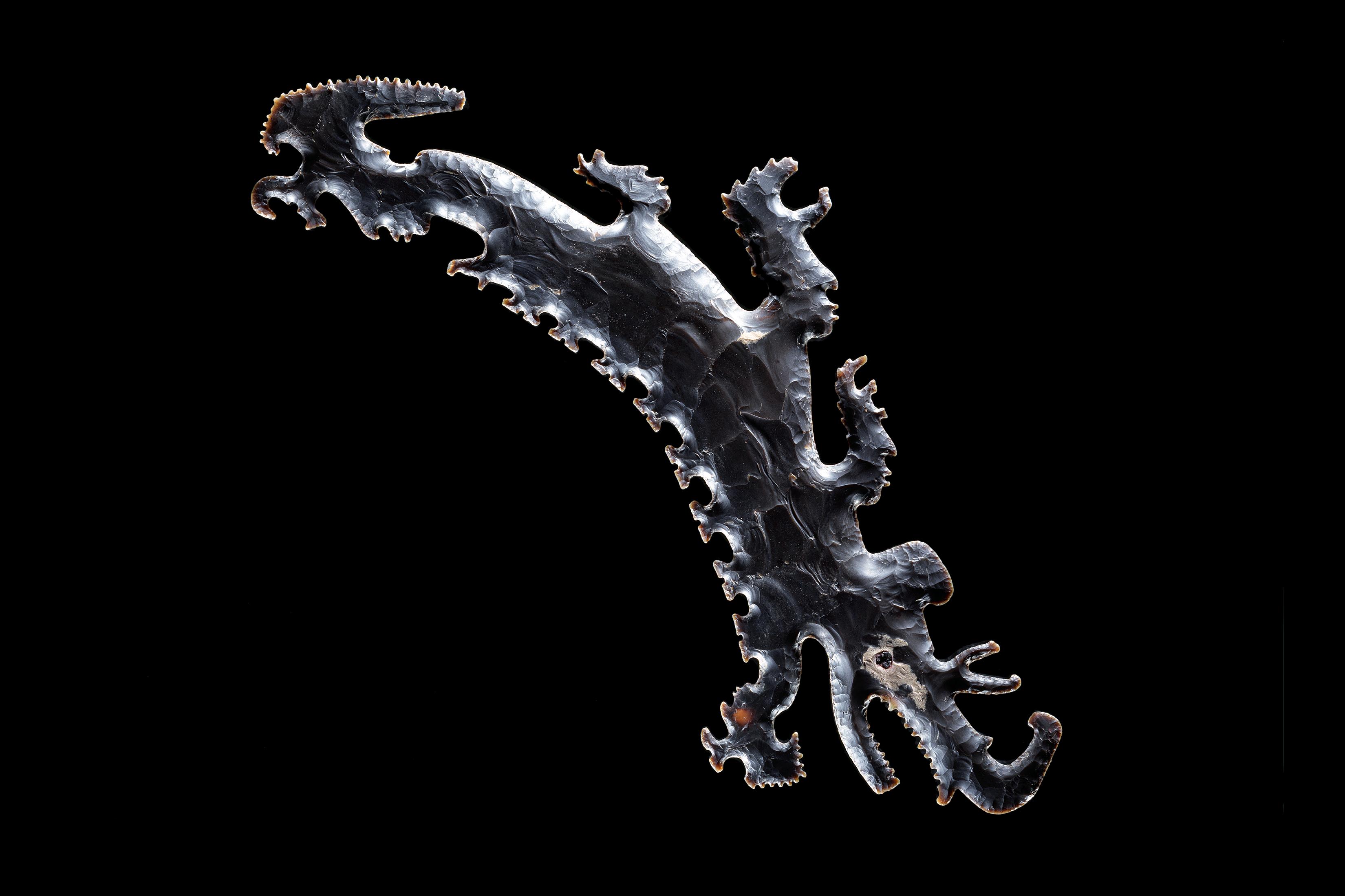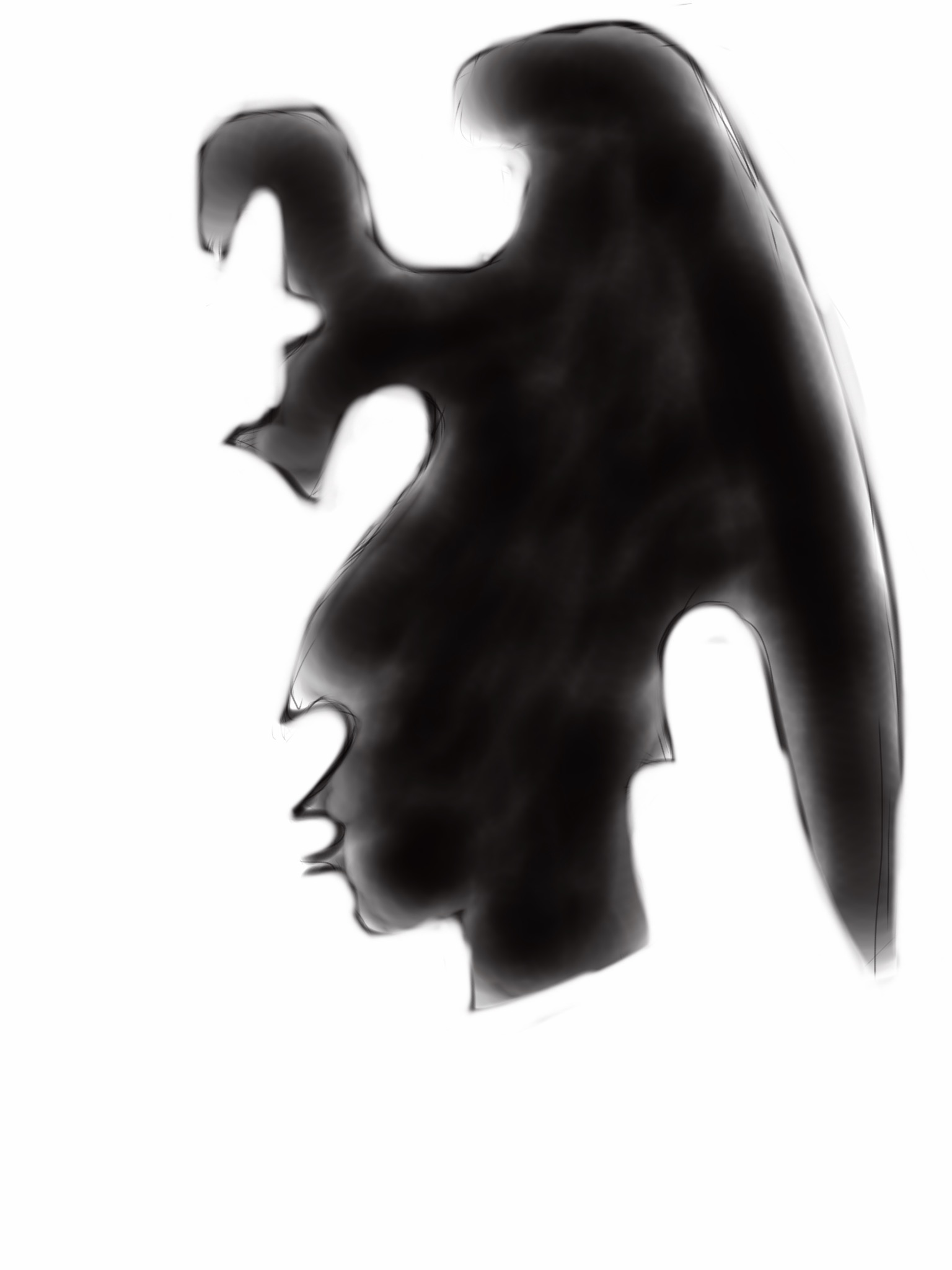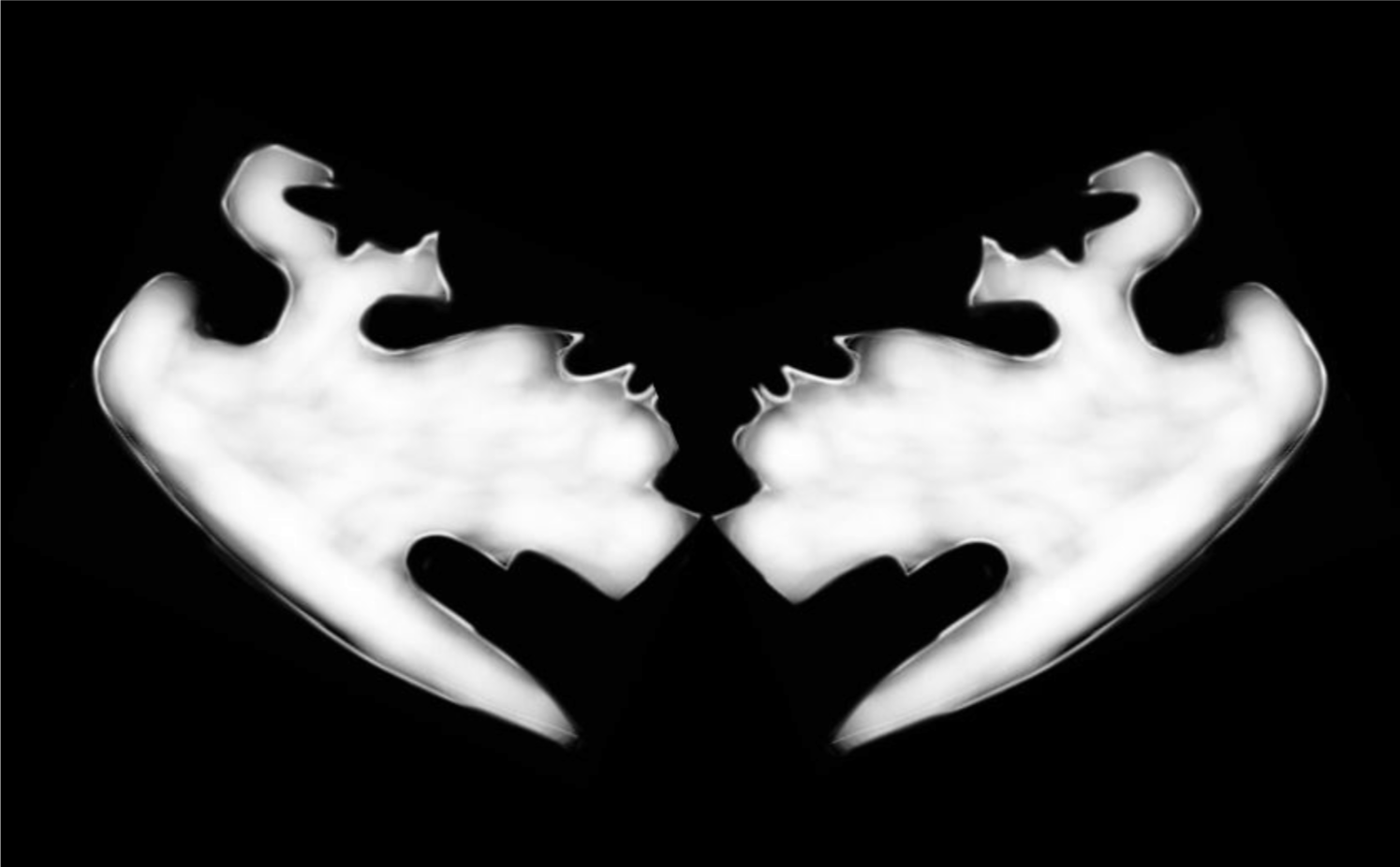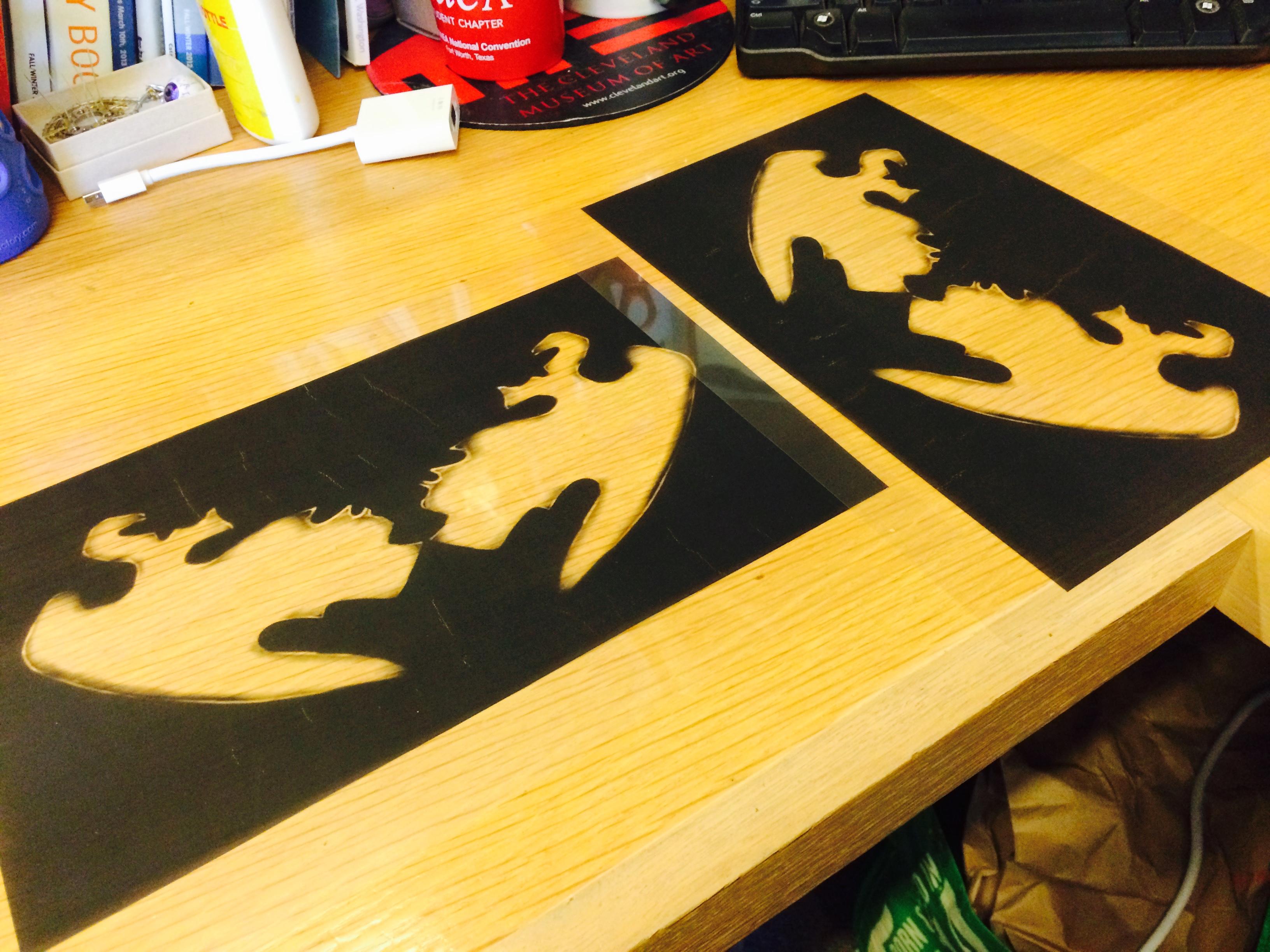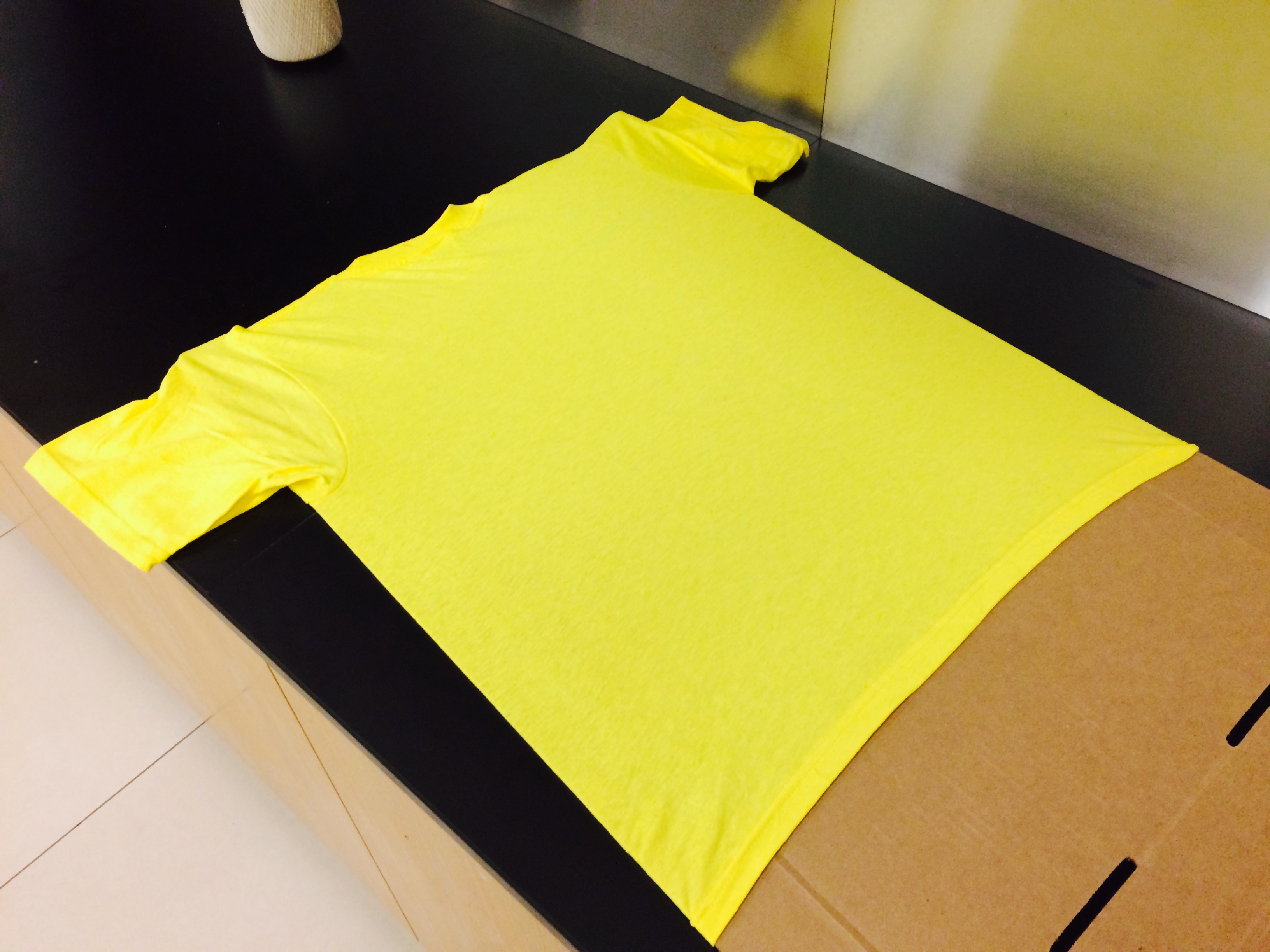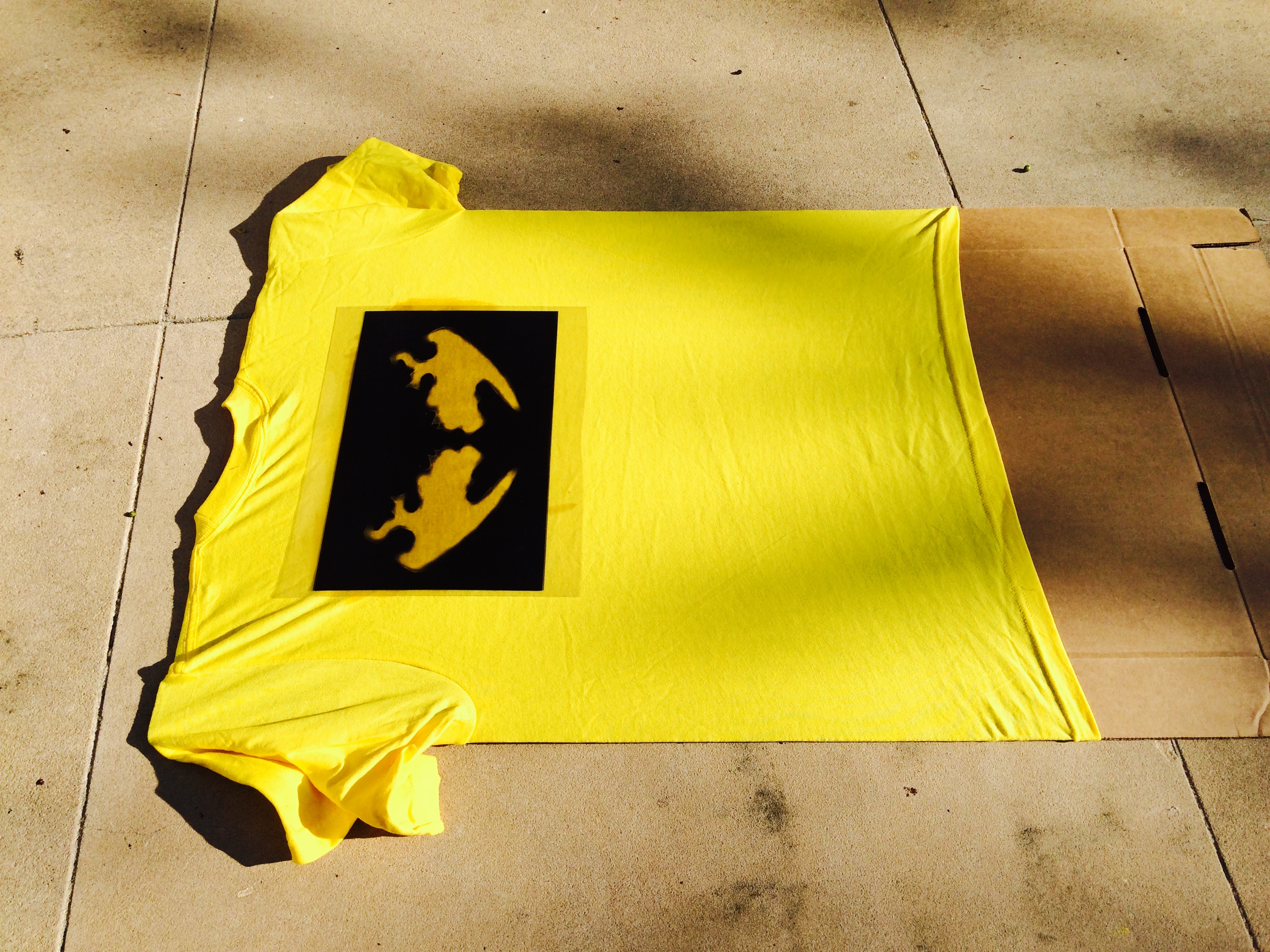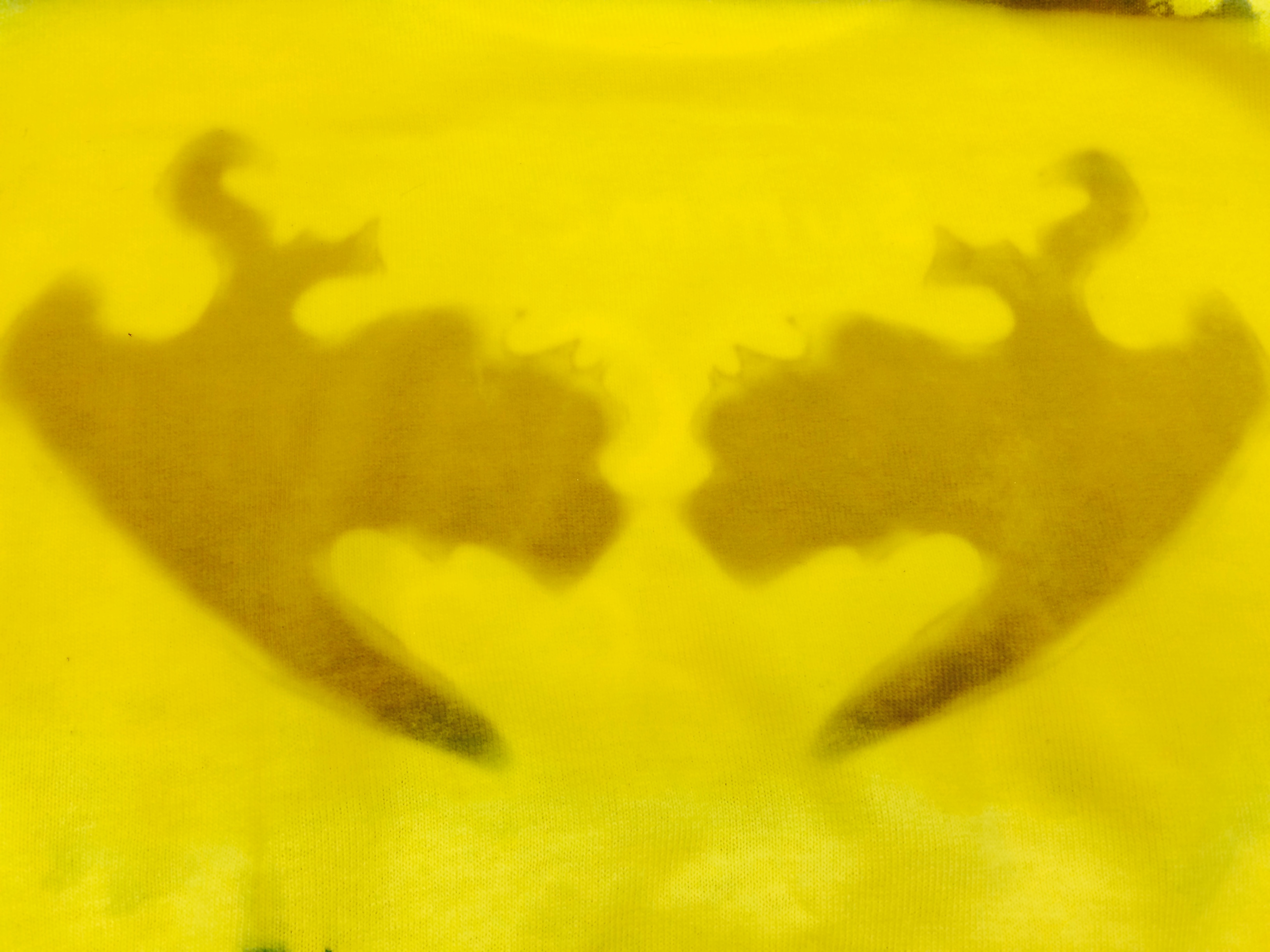After 16.5 years at the DMA, JC Bigornia, Manager of C3 Programs, is heading across the freeway to take the position of Manager of Mobile Innovation at the Perot Museum of Nature and Science. JC is our McGuyver, always ready with an ingenious, perfect solution for any and every art-making challenge we throw his way. For his last day at the Museum, we’re taking a look not just at the countless small and brilliant projects he brought to life through his freakish artistic talent, but the way in which his worked shaped our department in larger ways.
Susan Diachisin, The Kelli and Allen Questrom Director of the Center for Creative Connections, perfectly captures what it is we all enjoy about our resident DIY expert:
JC is a creative and diligent art educator who has managed and taught thousands of programs for museum visitors during his tenure here. He worked with people of all ages, guiding them in careful looking at works of art from the collection and then making connections through an art making process. He was at the helm of our popular Late Night Studio Creations, the drop-in art making program that hosts over 250 multi-age visitors each month. And for many years he led the drop-in weekend family Studio Creations that took place on every Saturday and Sunday all year long. He spent the summers managing logistics for the Summer Camp Program for children and teens, as well as many other family programs too numerous to mention here.
JC has a pretty high coolness factor that was perfect for his accomplishments of working with teens—a focus he originally started back in 2008. In 2013 he was the Project Manager of the IMLS Teen Learning Lab planning grant in partnership with the Perot. For that he spent extensive time researching teen developmental learning, designing innovative programs, and launching a DMA/Perot Teen Advisory Council (TAC). This project boosted his already popular Urban Armor program and launched Maker Club the Thursday night program focusing on the intersection of art and science. He recruited and met bi-monthly with the thirteen member TAC team, and collaboratively led experimental programs, visiting artist projects, and community projects in partnership with other Dallas organizations.
JC brings extensive artistic skills to the programs he designed. I can’t tell you how many times during the development process he had to test and produce project samples. He would say, “I’ll just make that.” And a short time later he would share a creation that was absolutely incredible.
As humble a person as JC is, there are a few memorable projects that you might have seen and may not know they were his:
If you were ever at the Materials Bar in the C3 Materials & Meanings exhibition you might have caught JC’s creative hands demonstrating how to work with materials on the video screens:
Last year, JC developed a week-long teen summer camp program call Brains, Brains, Brains where the participants learned about the art and science of zombie culture. Inspired by our collection, they transformed themselves into zombies and went roaming in the galleries:
The Perot Museum entrance featured a mural designed by the TAC students led by JC:
JC’s students in the Urban Armor: Street Art Workshop transformed the DMA Sculpture Garden with masking tape:
And this year, the popular teen themed Late Night in June was developed and run by JC’s teens.
JC is a terrific listener and thoughtful which makes him an excellent supervisor to our volunteers and interns. They adore working with him. They enjoy his creative ideas as well as the support he gives them. He is genuinely interested in the people he works with and takes the time to get to know everybody. I’d like to publically thank him for his outstanding work at the DMA with our visitors.
In case you—like all the rest of us here—would like to siphon off a little of JC’s talent and take some art-making adventures of your own, check out his many DIY tutorial blog posts on how to make: sounds prints, printed t-shirts, etchings with cola, vinyl toy mini-amps, collagraphs, and cosplay armor and accessories.
In his new position, JC will oversee the Perot’s fleet of Mobile Innovation trucks so look for him on the streets–taking learning into the community! We’re gonna miss ya, JC!
Amy Copeland
Manager of Go van Gogh and Community Teaching Programs
